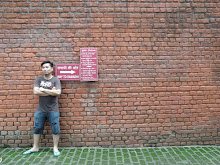What do women know about football, eh? At half-time during the Man City game, my girlfriend told me that "there's plenty of time left".
Yeah, I said, but you don't draw, let alone win games when you're 2-0 down away from home; not against big clubs, anyway. Women... When will they ever learn?
So I hereby attempt to reclaim some supposed expertise, in the face of my pessimism and ignorance.
A few weeks ago I revealed some of the research findings from my new book, Dynasty, relating to how much Liverpool teams of the past 50 years have cost to assemble, in relation to the transfer record of the day.
I can now break this down further, and deal with individual signings, as well as the overall expenditure of each Liverpool manager since 1959, to look specifically at the success of their buying strategies, and the value for money the players represented.
Based on a comparison with the transfer record of the time each player was signed (therefore £110,000 in 1961 counts the same as £30.8m in 2006), Benítez's most expensive signing – Torres – ranks only 10th in the Liverpool list since 1959.
The Spanish striker cost only 75% of the British transfer record in 2007; whereas two far less successful strikers, Dean Saunders and Stan Collymore, each cost the full 100%.
In these ‘real' terms, Robbie Keane is only the club's 18th-most expensive player. The fee may have been the 2nd-highest in terms of pounds sterling, but inflation masks the true value. It's analogous with the 'highest grossing film' phenomenon; of course a modern-day film is going to gross more when the entrance fee is now so much higher than it was for Star Wars or ET two or three decades ago.
In terms of what he cost at the time, Julian Dicks was actually more expensive than Keane: 67% of the transfer record of 1993, compared with the Irishman's 66% in 2008.
Indeed, Souness has three players ranked higher (in terms of Relative Cost) than any of Benítez's purchases, and a stomach-churning total of five who feature above Rafa's 2nd player on the list (Keane), while a Souness signing, ex-no.7 Nigel Clough, also sits one place below the current no.7, making it six in the top 20 ‘expense' chart for a manager in charge for less than three years. Of those six Souness signings, only Mark Wright was anything like a success.
Indeed, the average cost of each Souness signing was a whopping 45% of the transfer record of the time (in today's terms, averaging an incredible £15m per player), which puts him way ahead of the 2nd manager on the list, Bob Paisley, whose average was 35%; Roy Evans ranks 3rd with 31%. Of the eight managers over the past 50 years, Benítez sits at the bottom of the list, just below Gérard Houllier.
At the time Dynasty went to print in the summer, the average cost of each of Rafa's signings was just 16%; now, after his dealings leading up to deadline day, it is still only 17.2%, slightly behind Houllier's 19%.
Even though he was dealing in far lower totals in terms of pounds sterling, Bill Shankly's players cost on average 29% of the British record, but the closest he got to the high-water mark was the 83% fee for Tony Hateley in 1967, in what was one of his less-astute pieces of business.
Benítez's figures naturally include more ‘squad players' – a necessity for the modern game. But that is not to say that in the old days the squads didn't have their own depth; after all, Shankly always proclaimed that the second best team on Merseyside after Liverpool's first team was its reserves. Indeed, it was often where new players, whatever they cost, spent some time learning the ropes. Also, these calculations exclude young players bought for the future and yet to feature (or who never got to feature) in the league, so it's not like Benítez's average is brought down by the litany of recent teenage recruits.
To date, four Liverpool managers have broken the British transfer record: Bob Paisley (on Kenny Dalglish), Graeme Souness (Dean Saunders), Roy Evans (Stan Collymore) and Dalglish himself, on two occasions, with Peter Beardsley and Ian Rush.
In the last few years it's been Chelsea and Manchester United vying for the honour, with a host of £20m-£30m signings, before Manchester City popped up with £32m for Robinho. A new big spender is in town, and you sense that this is only the start of their investment, although the weekend's vanquished opponents had broken the record three further times dating back to 1961.
Incredibly, had the Robinho deal not been concluded at the same time, Dimitar Berbatov would have become Alex Ferguson's sixth British transfer record-breaker (the Bulgarian striker equalling the fee paid by Chelsea for Shevchenko), but instead that deal rates at 96% thanks to the Brazilian's fee.
The list of Ferguson's five record-breaking signings – Roy Keane, Andy Cole, Ruud Van Nistelrooy, Juan Sebastian Veron and Rio Ferdinand – does not include other very expensive deals, like those involving Mark Hughes, Gary Pallister, Dwight Yorke and Wayne Rooney, each of whom cost 85-95% of the record fee of the day.
Or, in other words, each of whom cost 10-20% more than Fernando Torres when put into the context of the year the deal took place. And Ferguson's five British transfer records puts him equal with Liverpool's entire history!
Ferguson has been in the job a lot longer than Rafa (roughly five times as long), and therefore it's natural he'll have bought a greater number of expensive players. But if you rank his deals in terms of relative expense in comparison with Benítez, Ferguson occupies the first nine places in the top ten.
But the amount each Liverpool player cost does not tell the full story of his ‘Quality,' from which his ‘Value For Money' can be judged.
For this purpose I put together a Brains Trust of writers, authors, statisticians and high-profile fans, including people like Brian Reade, Oliver Kay, Neil Dunkin, Ged Rea, Les Lawson and Shanks' son-in-law, Vic Gill (a former Liverpool trainee), as well as some very longstanding Reds, one of whom, John Crossley, went to his first game in 1936.
Their task was to rank every single player out of 10 in terms of what he gave to the Reds' cause. Working with the player averages from almost 40 contributors in total, I devised coefficients to assess how good each manager's signings were, and how strong each squad was at the time each man took charge – another vital method to assess the task he faced.
While Kenny Dalglish was voted the best signing in terms of Quality – an incredible perfect 10 from all judges – he had been the most expensive British footballer of all time in 1977, so, like Torres, it was talent at a price. By contrast, some players, such as Alan Hansen, Sami Hyypia, Ian Rush (first time around) and Kevin Keegan were rated almost as highly (averaging over 9), but cost pittance, and therefore represented better value.
Dalglish was still the perfect signing in many ways, but without the ‘budget' players like Rush, Whelan, Neal, Hansen and Clemence, Paisley would not have had a suitable team to support the great Scot's talents.
There was, however, one shock when I recently ran more statistical analysis for a side project. Over the past 50 years, Liverpool have made 18 expensive signings (66%-100% of the record), 30 medium-priced signings (33%-66% of record), and 124 signings who cost less than 33% of the transfer record.
While the cheapest group on average played the fewest games and rated the lowest – as expected – it was actually the medium-priced category that came out on top overall. Not only did they play on average 20 more games for the Reds than their more expensive peers, they averaged 7.26 out of 10 in terms of Quality, with the ‘bigger buys' rating at 6.96. (The cheap group averaged 5.89.)
Ultimately, it all comes down to the judgement of the manager, and each player as an individual. Of the 33 British record-breaking transfers in the 50 years covered by the book (excluding players emigrating), only four resulted in total flops, while four more, including Liverpool's Dean Saunders and Stan Collymore, were only moderately successful. That leaves 25 deals that paid off to a fairly significant degree.
Canny Managers
As well as recognising the players who were seen to be the best, it seemed essential to work out how much Value For Money each manager got for his overall expenditure, because no Liverpool boss has ever been able to extravagantly splash the cash on an endless array of talents.
Starting with a player's Quality rating (out of 10), calculations were made that added further points (0.01) for every game played, before deducting points (up to -10) for how much he cost in relative terms (ergo 83% = -8.3). Also, if applicable, a figure up to +10 was added for how much he was later sold for.
So someone like Kevin Keegan, who cost little, played over 300 games to a very high standard, and was sold for a record-breaking fee, scores particularly highly. While his Quality wasn't rated quite as highly as Dalglish's, his sale essentially financed the deal for the Scot so that a great side could get better still.
It was theoretically possible with this system to score 30 points, but that would mean playing 1,000 games. So in reality, 25 points was about as close to perfect as a player could get. And one player rated just a fraction short of this remarkable figure: Ray Clemence, who totalled 24.75. Four players out of the 180-odd listed managed to record a minus figure (I won't name and shame them here, but three were signed by Souness).
The average Value For Money rating of each manager's signings was as follows: Paisley, 12.17; Shankly, 10.74; Benítez, 8.70; Fagan, 8.25; Dalglish, 8.19; Houllier, 6.10; Evans, 4.54; Souness, 3.45.
It was interesting to note that Joe Fagan signed only very good players, with no real flops (Wayne Harrison aside, due to his incredible injury hell) but also no real resounding successes, although Jan Molby came very close to being rated ‘top class' when fit. Shankly, by contrast, signed three of the top five in terms of Value For Money, but also ended up with a large number of failures. Dalglish also signed a mixed bunch: mostly great up to 1988, then mostly iffy afterwards.
However, as I've always maintained, it only takes a few signings to be spot on, and providing the flops are not horrendously expensive ones who cannot be sold on, the rest can almost become irrelevant. The good can end up outweighing the bad; just look at the litany of flops signed by Arsène Wenger – the great ones make them easy to overlook.
Just as Shankly signed Clemence, Keegan, Hughes, St John and Yeats – players who did the Reds proud in the spine of his two great teams – Benítez has signed Torres, Reina, Mascherano, Alonso, Skrtel and Agger. We don't need to obsess about David Wilson and Josemi, Jack Whitham and Mark Gonzalez.
Of course, it will probably take a league title to conclusively prove how good Benítez's signings really are. But for me, players like Torres, Reina, Mascherano and one or two others wouldn't have looked out of place in the best sides of the past, and that's saying something
9 Biddeford Land For Sale Near Me
2 tahun yang lalu



